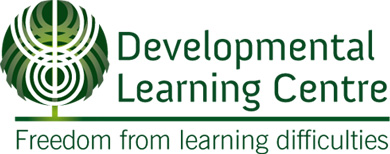Why is spatial orientation important for a child's development?
Spatial orientation is one of the key capacities which must be mature if a child is to learn to read and write easily. The early childhood movement patterns like rolling, creeping, crawling, rocking and later walking, running, climbing, swinging all build a sensory “map” in the child’s brain of where he is in space at any particular time.
How can I encourage my child to develop their spatial orientation?
A young child will explore first his cot, the living room floor, the house, the yard and then the neighbourhood. By 5-6 years, the child has enough information and experience stored to enable him to run, jump, hop and skip forwards and backwards at will. He can climb trees, roll down hills, possibly ride a bike and jump on a trampoline without falling off. Engaging in these activities help our children to find out where they end and where the world begins (sometimes a painful lesson!).
Spatial learning must be experienced over and over again until it is internalised and automatic. Then when the child enters school and is learning to write and read, he or she will be able to quickly remember which way in two dimensional space (on paper) the sticks and balls need to go on the page go to make the different letters. For example p, b, q and d are all very similar, and difficult to tell apart unless the child has good spatial orientation.
What happens when a child has poor spatial orientation?
Children presenting at our clinic with dyslexia (difficulty with spelling and reading ) invariably have poorly developed spatial orientation. This will result in reversals of letters which persist after the age of 7, and poor memory for the shapes of words. Requiring such a child to do more and more of the tasks he already struggles with (reading, writing and spelling) without fixing the underlying cause is like asking him to keep banging his head against the wall.
How do I get help if I think my child has poor spatial orientation?
Whatever the reason for his delay, the good news is that because the brain is so plastic and malleable it is possible to revisit all of the early childhood movement patterns. The child then has a second chance to develop his spatial orientation and enable him to learn more easily. At the Developmental Learning Centre, we offer two therapies that can assist with the improvement of a child's spatial orientation:
Developmental Movement Therapy
Can you imagine trying to build a house without putting in a firm foundation? Trying to remediate a child with dyslexia who simply does not have the equipment (wiring) and foundation (mature neurological system, good spatial awareness, listening skills and visual perception) for their “house of learning” is very difficult.
At the Developmental Learning Centre, we believe our first task is to in address the underlying immaturities and develop a good neurological foundation. To do this we use Developmental Movement Therapy (Extra LessonTM). Central to this therapy is the idea that learning and behavioural difficulties are a result of developmental issues in a child’s early years. This means they may not have received some of the sensory input they needed that form the basis of our learning processes. By repeating early childhood movement patterns, we are able to ‘rewire’ brain and rebuild the pathways and foundation of learning.
Click here to learn more about Developmental Movement Therapy and the amazing results it can have by reading our testimonials here.
Auditory Retraining Therapy
If your child has dyslexia, it may also be a result of an auditory processing difficulty or disorder, and they will be likely to benefit from Auditory Retraining Therapy. This therapy uses filtered music to mature the pathways in the brain needed to recognise different sounds when reading and spelling and to process spoken language quickly and efficiently. Music therapy is also used to treat children who are easily overwhelmed, hypersensitive and anxious, and have difficulty regulating their emotions.
It is relatively new and is not used by audiologists and speech and language therapist in NZ as a rule. In fact your GP, your audiologist and your speech and language therapist may not have heard of it. However it has been in existence for approximately 40 years. It was developed by a French ear nose and throat specialist, Dr Alfred Tomatis (www.tomatis.com ) and is incredibly effective for children with auditory dyslexia.
You can learn more about Auditory Retraining Therapy and the amazing results it can have by reading our testimonials here.
Does your child display poor spatial orientation?
Call 0800 543 399 or Request a free call back with the Developmental Learning Centre to understand if how your child could benefit from our natural and holistic therapies.
